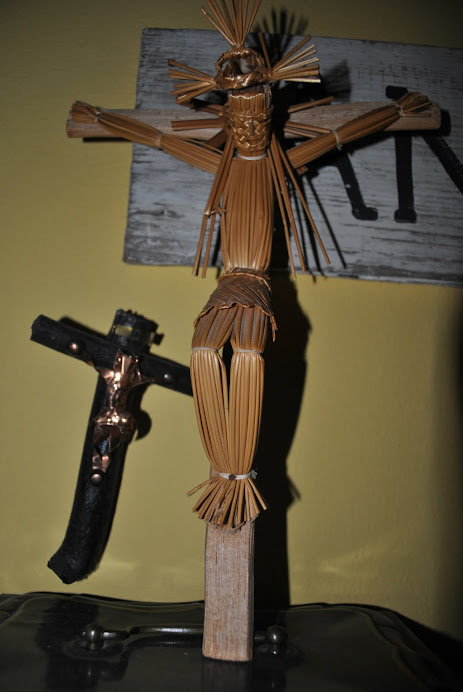It all began when I acquired a beautiful, rare 1940s
Fiesta
turquoise footed bowl that would have been worth $150, except it had a big chunk missing from the foot. To the Fiesta collector, who prizes perfect pieces, it was virtually worthless.
"You know, I think I can fix that," said Mr. Fix-It, aka my husband.
He took some putty, the kind you use to fill holes in walls, and filled in the spot where the chip was. When it thoroughly dried. he sanded it down and then, using the paints he used on his model airplanes, painted the chip to match the rest of the bowl. He then finished it off with a coat of
polyurethane
.
His match was so perfect, you could hardly tell where the chip once was.
But the real test was its durability. Would the repair hold up to the periodic hand washings the bowl would undoubtedly get as it was used?
Well, the repair was done 13 years ago, and the bowl is still as good as new. In the interim, I've become quite the ceramic restorer, perfecting the techniques my husband developed when he repaired that first bowl.
I now have people bring me beloved
religious statues
, marble busts, heirloom ceramics and other items to repair.
I recently repaired a very heavy 3-foot chalkware statue of Abe Lincoln for a couple. Their granddaughter accidentally knocked it over and Abe's arm broke off. It was a challenge. The piece was so heavy that my usual method of first gluing the pieces back together with Super Glue just wouldn't suffice. I went to Home Depot to seek advice and was told plumber's cement would do the trick. But, no, the arm was still too heavy. So I cut pieces of a wire hanger, drilled holes into the plaster shoulder and side and inserted the wire into the holes to anchor the arm. Once anchored, the glue held. Then I packed the cracks with putty to further strengthen the breaks. Once the putty thoroughly dried, I could mix the paint, blending it to match the existing paint on the piece. Once completed, you could hardly tell it'd been repaired at all. I was pretty pleased with myself.
I was able to perform miracles with a
majolica
teapot with a broken spout. I inserted a pencil in the remaining spout and molded the putty around the pencil to lengthen the broken spout. I discovered the ideal tool for sanding and shaping the putty afterward is a battery-operated manicure file. The various attachments allow me to sculpt lines into the putty or smooth it out, depending on the effect I'm after.
The artistic, and tricky, part comes with paint. It takes a lot of experimentation to find the right colors and then an artist's concentration to blend the paint to match the existing piece. A coat of polyurethane helps it to blend and gives it durability.
When I finished with Mr. Lincoln and the owner came to retrieve him, he asked how much he owed me. I was momentarily baffled. I'd never charged for my work before. I'd always done it for the challenge of making something broken beautiful again. I didn't know what to charge so I suggested he make a donation to my favorite charity.
It just didn't seem right to accept money for having so much fun.








